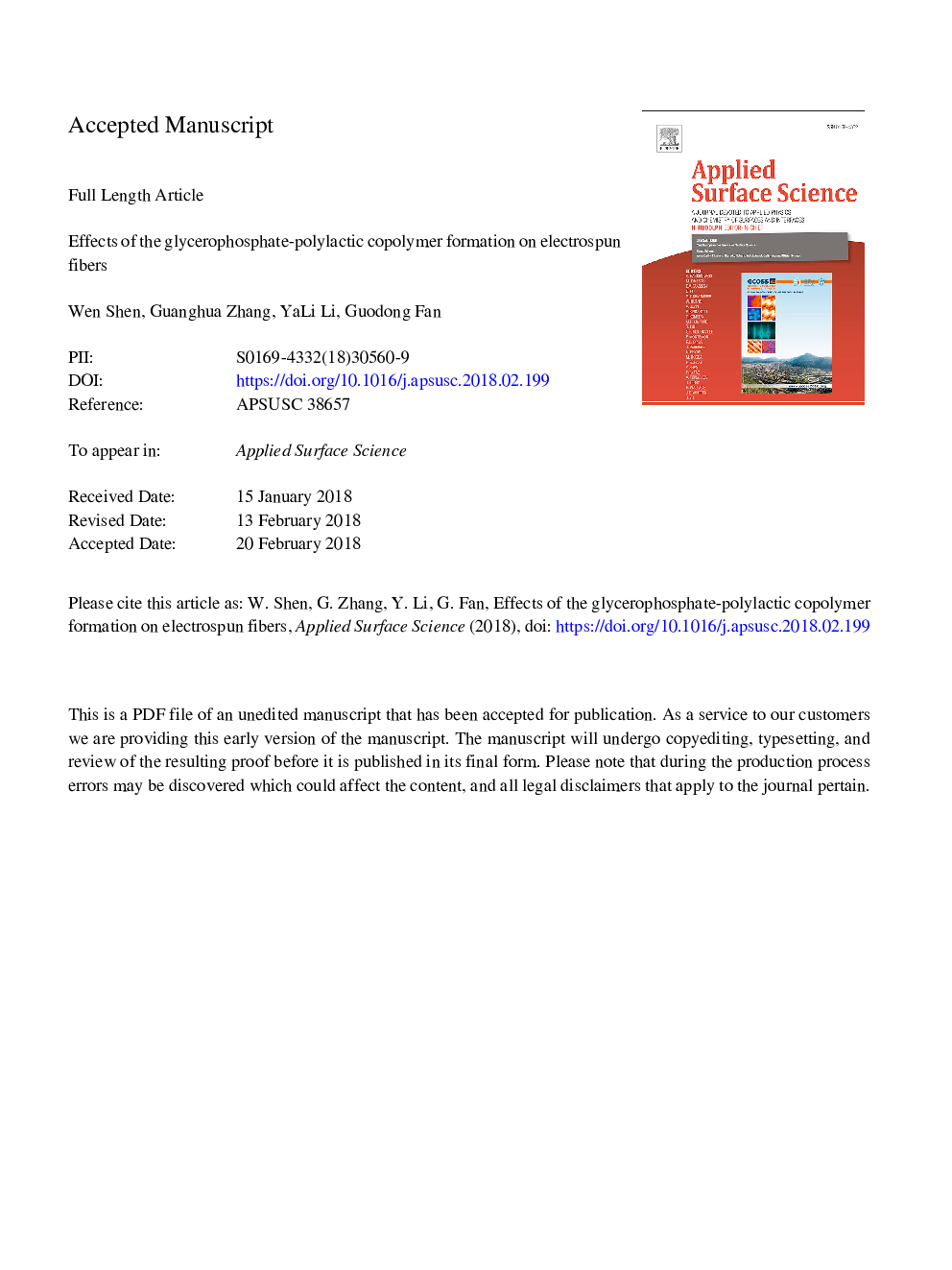| Article ID | Journal | Published Year | Pages | File Type |
|---|---|---|---|---|
| 7834527 | Applied Surface Science | 2018 | 17 Pages |
Abstract
Poly-lactic (PLA) porous fibers are widely used in tissue engineering scaffolds and many other fields. Non-solvent induced phase separation is one of the best way for preparation of porous fiber. It is difficult to obtain the PLA electrospun porous fibers by phase separation. In this paper, glycerophosphate-polylactic copolymer (GP-PLA) are synthesized with sodium glyceryl phosphate and L-lactide to produce porous fibers. Furthermore, the Gel permeation chromatography (GPC), FT-IR and 1H-NMR are applied for characterizing the obtained copolymers. Thermogravimetric (TG) measurements indicate that the thermal stability of GP-PLA is lower than that of linear PLA. Under 30% humidity, porous GP-PLA fibers are obtained by electrospinning method, the scanning electron microscopy (SEM) refers that through the modification of the molecular structure, GP-PLA fibers are more porous under the same condition. The water contact angle is increased coming with the increase of GP contents. Hydrophilic porous GP-PLA fibers are obtained via solvent phase separation. The relationship between hydrophilicity and surface morphology of materials is further explained by Atomic Force Microscope (AFM). GP-PLA has a potential application in the field of scaffold for tissue engineering.
Related Topics
Physical Sciences and Engineering
Chemistry
Physical and Theoretical Chemistry
Authors
Wen Shen, Guanghua Zhang, YaLi Li, Guodong Fan,
